Texas Style Smoked Beef Brisket
On June 11, 2019 (Updated September 06, 2022)
This post may contain affiliate links. Please read our disclosure policy.
Texas Style Smoked Beef Brisket is more than a simple recipe, it’s a process for melt in your mouth smoked brisket. All you need is salt, pepper, smoke, and time, and you’re on your way to eating the best beef brisket of your life.
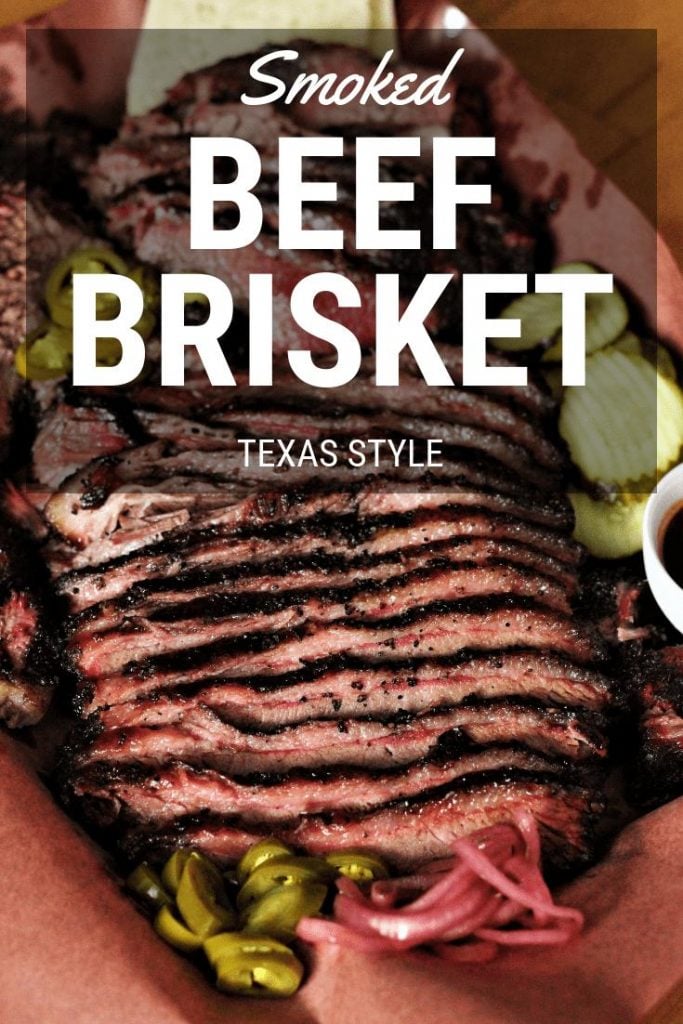
Smoked Brisket
I totally understand how intimidating it can be to smoke a huge, expensive brisket for the first time. That’s why I’ve tested and re-tested many different methods and recipes to help you achieve perfect results every time using a relatively simple process.
Once you try this juicy brisket, you’ll be itching for the next opportunity to smoke another one. BBQ (especially brisket) is something you have to learn by experiencing it yourself, so let’s jump in and give it our best go!
Tools Needed to Smoke Brisket
I have linked the products that I use when smoking my brisket below so you can see exactly what I’m using at home. Not all of these are necessary, but after smoking a bunch of briskets, I have found they make the job a lot easier!
- Smoker. I like to use my CampChef SmokePro, but any variety that can hold a steady temperature of 225 degrees F will work great.
- Large Cutting Board. You’ll need a big surface to slice your hunk of brisket on once it’s ready to serve.
- Meat Thermometer. The Thermapen Mk4 is the perfect thermometer for this brisket, but any reliable thermometer will do.
- Butcher Paper. This Texas style brisket is wrapped in butcher paper during the stall. You can pick up some Hey Grill Hey Peach Butcher Paper over at Patio Provisions today!
- Chef’s Knife. A good, sharp knife is necessary to slice your brisket. This Dahstrong Chef Knife is perfect for the job.
How to Smoke a Brisket
Smoking brisket isn’t hard, it just takes time, and lots of it! Follow the steps below to get the best smoked brisket of your life:
- Select your brisket. I have a full write up about choosing the perfect brisket in my Brisket 101 post. Here are the basics: Plan on purchasing a whole packer brisket with both the point and flat muscle included. The grade of your meat matters, prime beef will have more fat marbling. (This means more flavor and juiciness than a choice graded brisket!). Buy about 1/2 pound (or more) of brisket per person you are serving.
- Trim the brisket. Some Texans claim they don’t trim at all. At most of the top smokehouses, however, they do trim. This step is so important for how the final product will turn out. Spend the 20-30 minutes you need to trim it properly. I have step by step instructions (and pictures) for trimming your brisket in this post: How To Trim a Brisket. There is also a sped-up version in the video (below the recipe card) that will help you get a visual for a trimmed brisket.
- Season your brisket. Texas style is seasoned with only coarse salt and coarse black pepper. My only addition (and this is personal preference, you can skip it if you’re a purist) is to add garlic powder as well. It doesn’t really change the flavor or take away from that amazing smoked beef, but adds a little extra layer of goodness.
- Get Smoking! Use a nice hardwood in your smoker. I used oak as the base wood with a little bit of cherry mixed in. The goal here, whatever type of smoker you are using, is consistent heat and a steady flow of thin blue smoke.
- Wrap the brisket. This is one of the most crucial steps, in my opinion, to achieving that super juicy tender brisket with that killer dark caramelized bark. Opinions differ between using foil and peach butcher paper, but for this recipe I am fully converted to the butcher paper after years of using foil. My briskets have never had a better smoke flavor and a more delicious bark.
The brisket gets wrapped up like a present, folding edge over edge until it is fully sealed. Return the brisket to your smoker with the folded edges down and continue smoking at 225 degrees F until the internal temperature of your brisket reaches 202 degrees F at the thickest part (make sure your thermometer is in the meat, not fat).
- Rest your smoked brisket. DO. NOT. SKIP. THIS. STEP. Resting your brisket allows so many of those hot and bubbly juices to settle down a little and redistribute to the meat. It also brings your brisket down to perfect slicing and serving temperature.
- Slice your brisket. I have a full post about slicing your brisket HERE. You want to slice your smoked brisket against the grain for maximum tenderness. But remember! There are two overlapping muscles and two different grain directions. You can split the point and flat sections and slice each individually against the grain before serving but that sometimes leaves pieces with no bark on top. Traditional Texas joints split the brisket down the middle, as close as possible where to point overlaps the flat, they then turn the point 90 degrees and slice it that way and then finish slicing the flat the opposite way. You will have some pieces where they grain isn’t perfect but if your meat is tender enough it won’t matter too much.
- Serve your gorgeously smoked brisket. In Texas joints when you order, you can request fatty or lean brisket. The fatty is the point and the lean is the flat. I like to tell my guests which slices are which so they can pick their favorite. The fatty is my personal preference, but I always grab a slice of the lean too because it has such an amazing smoke flavor! For an even more traditional experience, serve on a platter with butcher paper, lots of pickles, white bread, picked red onions, and pickled jalapenos. Sauce on the side. Always.
How Long to Smoke a Brisket
I wish I could tell you an exact time that smoking will take, but alas, that’s kind of the beauty of BBQ. It’s done when it is done.
For the initial smoke phase, I plan about 8 hours at 225 degrees F for my 12-13 pound briskets to reach 165 degrees F. However, your brisket will enter a phase in between 145 degrees F and 165 degrees F where the liquid evaporating from the surface of the brisket will cool it while your grill is trying to cook it. This is called the stall, and the time frame is different during this phase for every brisket I’ve ever cooked. This is where a good internal thermometer comes in.
The second phase (once it’s wrapped in butcher paper), can take anywhere from 5-8 hours. I usually plan an extra 2 hours for each of my brisket cooks because if it is done early, I can always set it in a cooler and allow it to rest for a while. If it is done late my husband gets hangry.
Bottom line: plan for anywhere from 12-18 hours to fully cook your brisket (this includes the initial smoke to 165 degrees and the wrapped smoke to get your meat up to 202 degrees Fahrenheit).
Tips for the Best Smoked Beef Brisket
Check out these pro tips to give you the upper hand when smoking your brisket:
- Mix your spices in advance. Mix your salt, pepper, and garlic in an old spice shaker container. Shake the spices out at about 2 feet above your brisket while seasoning. This will create a nice even layer of salt, pepper, and garlic across the entire surface of your brisket.
- Either side up cooks just fine! Many people argue whether you should cook your brisket with the fat side up or down when smoking. Guess what? I did two briskets, one up and one down. There was no difference in final product. Place it on there however you prefer!
- Don’t forget to rest! Resting your brisket is extremely important. I recommend resting your brisket for at least one hour. You can just leave it in the butcher paper and set it on a cutting board or baking sheet. If you need to rest your brisket for more than an hour, that is no problem! Simply wrap it in a towel (one you don’t mind sacrificing for tasty brisket) and set it in an insulated cooler. I’ve held briskets this way for up to 6 hours and they come out hot and perfect every time!
Variations for Smoked Brisket
Not all brisket methods are the same, and I often try different techniques to get the best results. Here are a couple of variations you can try:
- Slather! Some people like to use a binder to help the rub adhere to the brisket. My favorite is yellow mustard. This helps the seasoning stick, but the acidity also helps break down the surface of the meat and create a gorgeous bark. It’s not necessary, but worth a try to see if you like it!
- Wrap! I recommend wrapping in butcher paper, but foil is also an option. In fact, foil is the original Texas crutch to help push smoke dmeat through the stall. It’s still used in many BBQ joints. Your brisket may have a softer bark, but it will maintain a lot of moisture inside the meat itself.
- Temperature! I like low and slow for my briskets, but some people like the process to hurry a long a bit. You can try smoking at 275 degrees F to shorten the cook time. There’s no perfect formula to have a perfect time line, so keep an eye on the internal temp of your brisket.
Smoked Brisket Recipe
Watch the video below the recipe card and I’ll show you step-by-step how I make this smoked brisket at home. I’m on a mission to help you become the best backyard BBQer of your life, so head on over to YouTube, Instagram, or Facebook to get more recipes, videos, and tips from Hey Grill Hey. We can’t wait to hear from you!
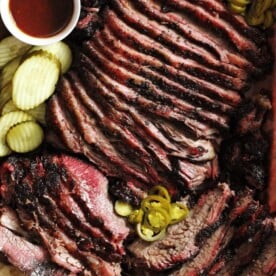
Texas Style Smoked Beef Brisket
Video
Equipment
- 1 Smoker I highly recommend this pellet grill!
Ingredients
- 1 12-14 pound whole packer brisket
- 2 Tablespoons coarse Kosher salt
- 2 Tablespoons coarse ground black pepper
- 2 Tablespoons garlic powder (optional)
Instructions
- Store your brisket in the refrigerator until you are ready to start trimming. Cold briskets are much easier to work with. Flip your brisket over so the point end is underneath. Remove any silver skin or excess fat from the flat muscle. Trim down the large crescent moon shaped fat section until it is a smooth transition between the point and the flat. Trim and excessive or loose meat and fat from the point. Square the edges and ends of the flat. Flip the brisket over and trim the top fat cap to about 1/4 of an inch thickness across the surface of the brisket.
- In a mixing bowl or empty spice container, mix the salt, pepper, and garlic. Share over the brisket to evenly distribute the spices on all sides.
- Preheat your smoker to 225 degrees F using indirect heat and hardwood smoke. Place the brisket on the smoker with the point end facing your main heat source. This is a thicker part of the brisket and it can handle the additional heat. Close the lid and smoke until and internal thermometer reads 165 degrees F (usually takes around 8 hours).
- On a large work surface, roll out a big piece of butcher paper (or foil) and center your brisket in the middle. Wrap the brisket by folding edge over edge, creating a leak proof seal all the way around. Return the wrapped brisket to the smoker, seam side down so the weight from the brisket crimps the edges of the paper wrap down tight.
- Close the lid on the smoker and, maintaining 225 degrees F, continue cooking until the internal temperature of the brisket reaches 202 degrees F in the thickest part of the meat (takes anywhere from 5-8 hours).
- Remove the brisket to a large cutting board and allow to rest for 1 hour before slicing. Slice both the point and the flat against the grain with a sharp knife and serve immediately.
Nutrition
Nutrition information is automatically calculated, so should only be used as an approximation.
**This recipe was originally published June 2017. It has since been updated and republished January 2019.
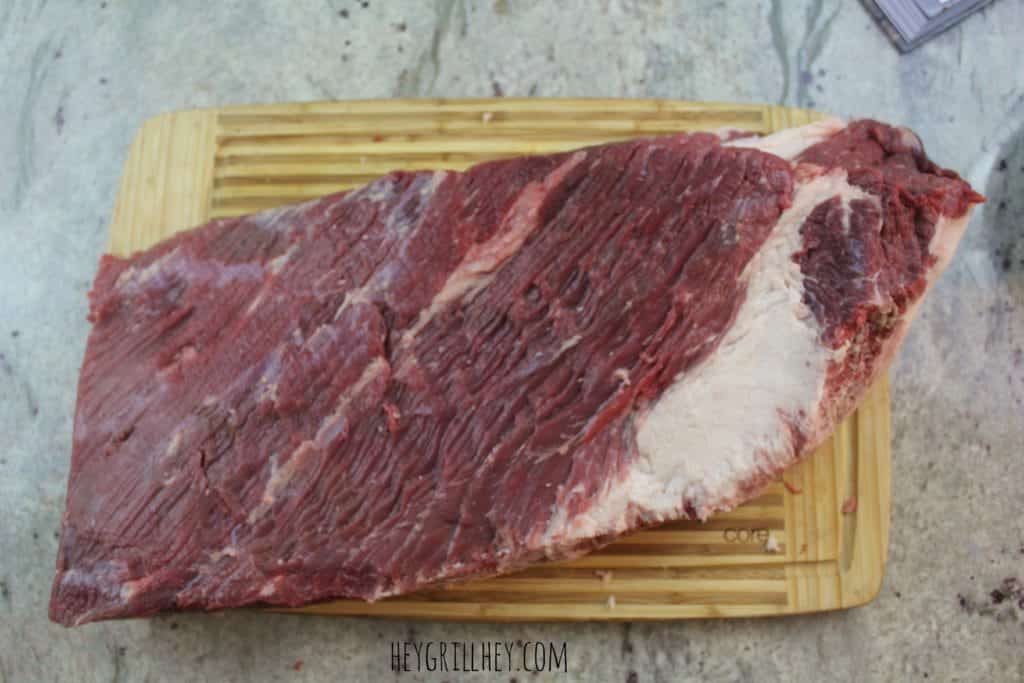
 The brisket gets wrapped up like a present, folding edge over edge until it is fully sealed. Return the brisket to your smoker with the folded edges down and continue smoking at 225 degrees F until the internal temperature of your brisket reaches 202 degrees F at the thickest part (make sure your thermometer is in the meat, not fat).
The brisket gets wrapped up like a present, folding edge over edge until it is fully sealed. Return the brisket to your smoker with the folded edges down and continue smoking at 225 degrees F until the internal temperature of your brisket reaches 202 degrees F at the thickest part (make sure your thermometer is in the meat, not fat).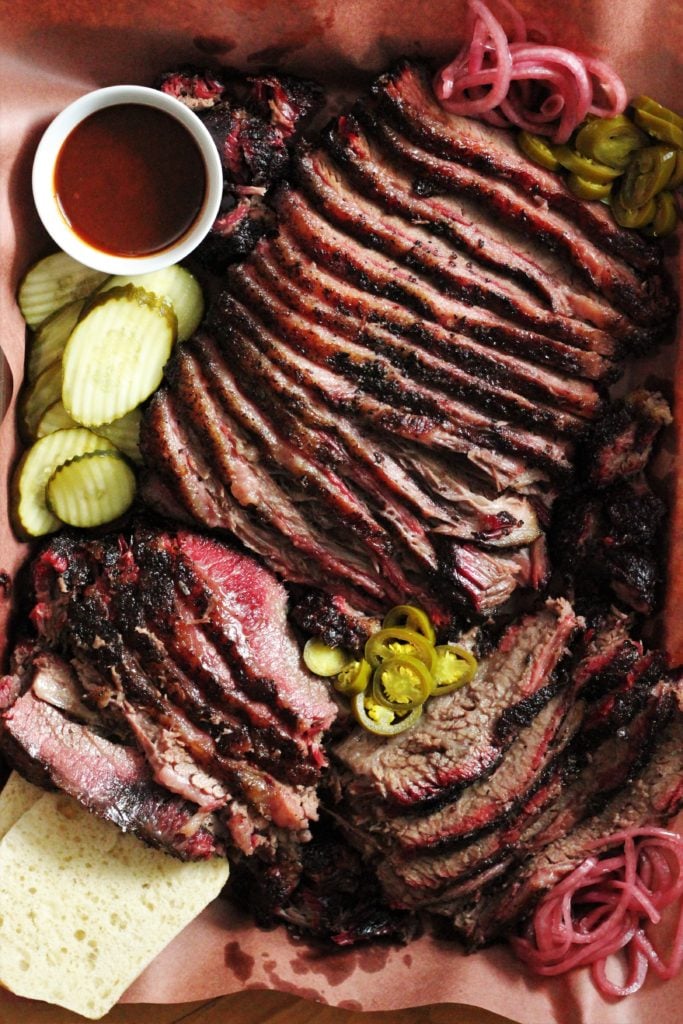
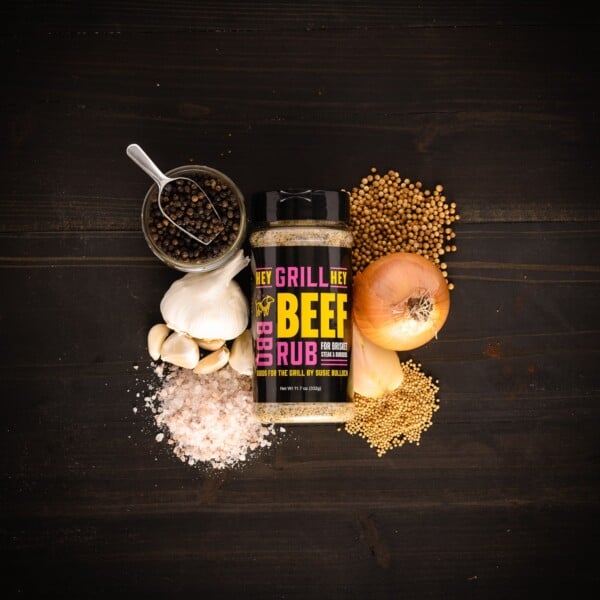


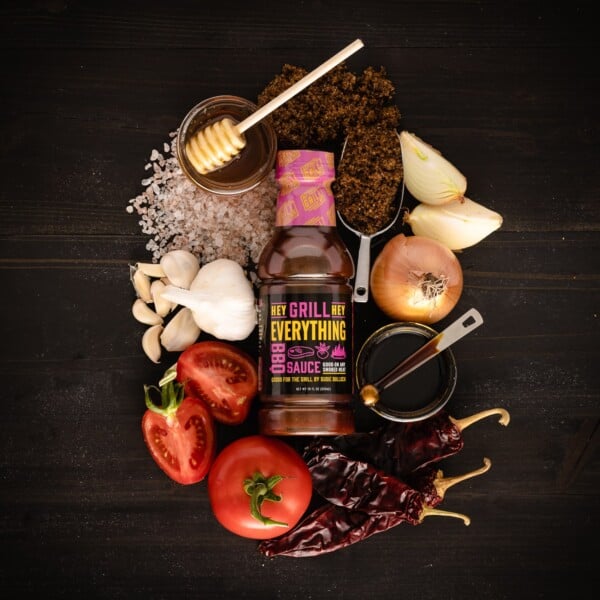
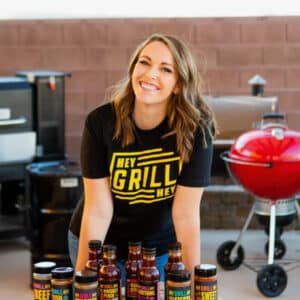
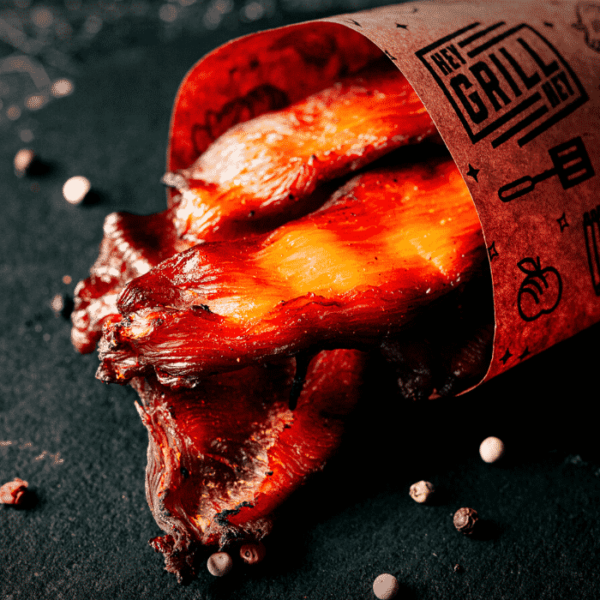
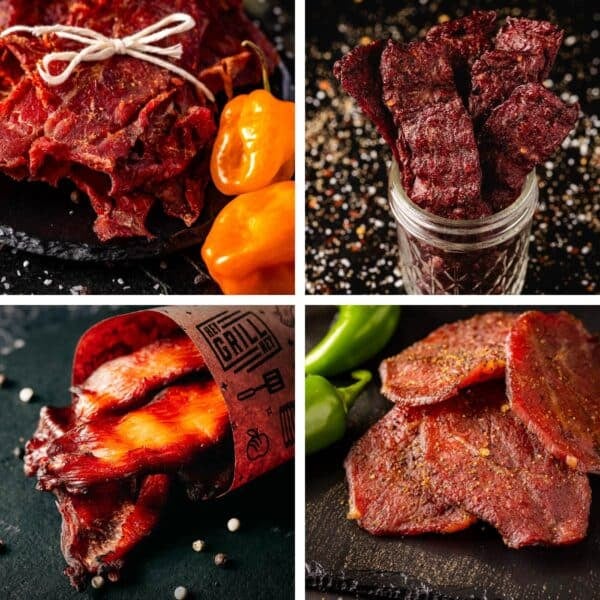

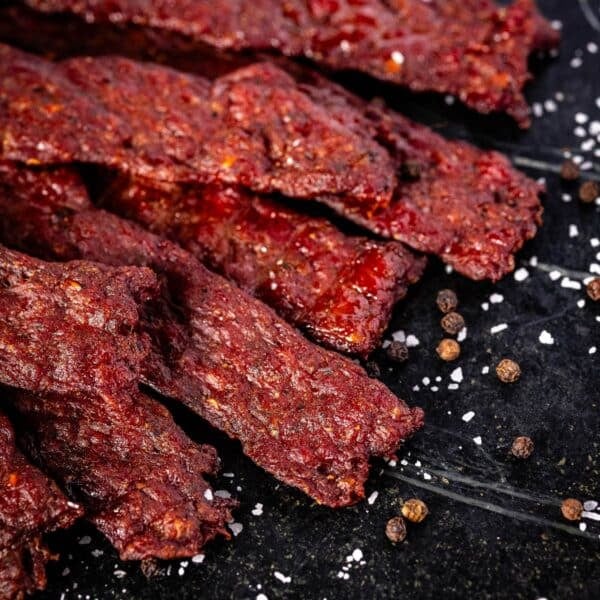





SO glad I found your recipe!! We have an electric smoker, and I’ve done a small brisket once before, had great flavour but way too dry. Since then I’ve been nervous to try it again. Does it matter how big of a fat cap the brisket has? I usually buy local grass fed & finished beef, which is what the brisket was that I smoked before, we just love the flavour and health benefits from grass fed versus grain fed beef. I know grass fed beef is leaner, so maybe it does not have a high enough fat content to use it for smoking? Would love your thoughts!
Stephanie, you totally nailed it! Grass fed beef is absolutely amazing for a lot of things, but due to the lower fat content, it can easily dry out during a long smoke. Some ways to combat that is by wrapping in foil with about 1/2 cup of beef stock instead of the butcher paper at 165. This will give you a more braised brisket with less of a bark, but should help a lot with moisture retention.
Hi Sue- have enjoyed all the input, your way! FYI- I have a treager( midsize ). I cook full size ” packer”, start the cooking @ 400 for 45 min., drop back to smoke and let it climb back to 145( that’s the plateau temp.), wrapping at that point I go to medium, and finish at that temp., to 200 degrees! We take it to the picnic in a cooler; only thing I miss is the ” solid bark”, when you cooler it”! Love prime rib offa the smoker! Cakes/meatloaf/turkey! Thanks for sharing your expertise ! J.c.
Thanks Gerald! I haven’t heard of your hot start method, I’ll have to give it a try one of these days!
What is the best pellets to use for a brisket?
I prefer oak with brisket, Ron.
Hey
So the brisket i bought was to big for my smoker. What is the best way i can cut it to make two peices and still retain the moisture and juices?
Hey Ryan- I would separate the point and the flat and cook them separately. I’ve got a video on how to separate them on this post: https://heygrillhey.com/bbq-brisket-burnt-ends/
Hey Susie,
I’ve used quite a few of your recipes, (thanks btw), and I’m going to give this Texas brisket a shot this weekend. I have a 12lb brisket and I’ll be smoking on a Traeger. We’d like to have dinner on the table Sunday, (tomorrow), by 6pm.
I’m planning to use the “smoke” selection on the traeger for 3-4 hours, then 225 the rest of the way, using your methods. With that said, if I start at 2am tonight, will that give me enough time for the cook and 1 hour to rest? Should I rest it more than 1 hour before slicing and serving?
Thanks!
Jason
Hey Jason- I typically start my briskets at midnight. That way, if they are done early they can rest in the cooler for an extra hour or two and be perfectly fine instead of pushing it and having a brisket stall out or take to long and we eat late. Good luck!
Will do, thank you!
Susie,
How long will my brisket be safe in a cooler before I start to jeopardize flavor, tenderness, etc? Would you recommend I still let it rest on the cutting board for an hour after it sits in a cooler for 2-3 potentially?
Thanks again!
Jason
Hey Jason- hopefully this reply isn’t too late for your brisket! I’ve left briskets in the cooler for 6 hours and they’ve stayed at safe serving temperature. If you’ve keeping it in the cooler resting, there is no need for an additional resting time on the cutting board.
Hey Susie, I wish I could post a picture. The brisket turned out amazing! I ended up having to take it out of the cooler and put in the oven wrapped in foil to hold the temp over 170 but it turned out great. My timing ended up being 12 hour cook, 5 hour hold, 1 hour rest and then it was sliced and devoured!
Is there any difference between “pink Butcher Paper” and standard white butcher paper?
Typically white butcher paper is treated and waxed.
Hi Susie,
I know you have been asked this a billion times but I just want to make sure I don’t screw this up. lol
I’m cooking for about 40 people for my dad-in-laws 80th birthday. It’s going to be a long weekend celebration. So I’m going to smoke a brisket and pork butt. I want to smoke everything ahead of time and freeze it in vacuum bags.
Now the question is, should I leave the brisket/pork whole or sliced/shredded before vacuum sealing. Also what’s the best way to reheat. I’ve read boiling water in bags or put into a roaster covered in the oven with beef/apple juice added until IT of 140 oven set at 275 degrees.
So not sure what the best way of doing it is.
Any and all advise is greatly appreciated. Thanks in advance.
Sue.
Hey Sue- Sounds like an amazing birthday party! I always try to recommend freezing the whole cuts in one piece. It will take longer to reheat, but the overall flavor and juiciness will be so much better if you can keep it whole. My favorite way to reheat is to keep it on the vacuum sealed pouches and submerge in boiling water. The roaster oven is fine if that’s what you need to do for convenience sake, but the absolute best way is the hot water technique.
Thanks Susie. I’ll definitely try the boiling water method. I’ll keep you posted on how it all went. Thanks again ????
This sounds like a great way to smoke brisket. I am a fairly novice but enthusiastic smoker and want to smoke a brisket for my wife, a Texan for her birthday. The question i have is best way to approach this given the ~15 hour prep time. Ideally people would eat around 5 PM. Working back, i could start at 2 AM but am reluctant to leave my smoker unattended (one for fear of fire, but really because i have not perfected maintaining a perfect 225 degrees in our Egg without checking at least hourly).
I see two discussions about reheating. So, I could smoke on the day before the party and then reheat. To be clear, the process would be: remove from smoker, let cool to room temperature, place in heat resistant plastic wrap and refrigerate. Then, take out of refrigerator and reheat to ~140 – should the oven be at 200 to get there? Suggestions for oven temperature?
Thanks in advance.
Hey Cord-
When I’m doing a brisket, I typically just plan on getting up several times during the night to check on my temperatures and fire. It’s not ideal, but that’s part of the love that goes into it. haha. If you wanted to smoke in advance and reheat, I recommend letting your brisket rest for an hour or two before wrapping the whole thing tightly in foil and then refrigerating. Reheat whole in the foil with the oven at 275. I’ve found it takes about an hour or two to get it up to serving temperature.
Thank you very much – here i go…
Hey Grill
A success! On our large green egg, time to cook was all a little quicker than your timeline. Cooked a ~14 lb brisket to 165 degrees in about 6 hours and to 202 degrees in an additional 4.5 hours (in peach butcher paper). Our stall seemed to happen a bit later. I also found it quite hard to keep the smoker at exactly 225 degrees, temperatures fluctuated between 210 and 240; I need to get better at that.
And the reheat was spot on – much of the bark was still crispy and the meat tender and juicy.
Thanks again.
Oh good!! I’m so happy it all worked out! Managing those temperature is definitely a work in progress for most smokers.
I’m questioning the wrapping of the brisket. Wouldn’t doing that prevent the smoke from penetrating the meat? All the TV shows show them throwning the meat into the smoker with no wrap. Am I missing a step? Please explain.
Don’t wrap your brisket from the beginning! You only wrap once it gets to the stall(once it gets up around 160 degrees)! By then, all the flavor you’ll get from the smoke has already taken. Wrapping is also optional. You can just power through the stall, which adds a bunch of time to your cook, and your bark will come out a bit better.
I’m glad to read this comment about time difference as it is spot on with my times. This one the first try so I was worried about the timeline. Got done earlier than expected so just gonna let it sit in the cooler until it’s time to eat
We have had to do the same thing and let it rest wrapped up in a cooler for a couple hours, it will still be great. Every cut of meat cooks differently as well sometimes!
The Texas brisket was fantastic, fed 25 people with a 16 # packer. People still talking about it 2 weeks later
That’s great Phil! So glad it was a hit for you!
Can leftover brisket be frozen for later consumption? If so, what is the best way to reheat it?
Absolutely! Store it in a freezer zip top bag, and press all of the air out. To reheat, bring a large pot of water to a boil. Drop in the bag of frozen brisket (make sure it is tightly sealed) and turn off the heat. It should reheat in 10 to 15 minutes.
Awesome. We are going on vacation and I want to bring smoked brisket to my Yankee friends from PA.